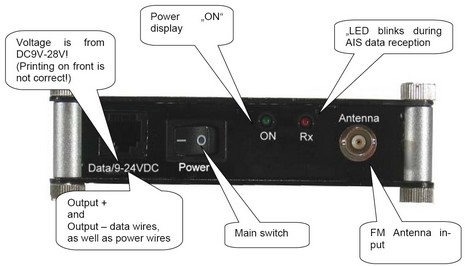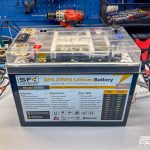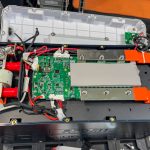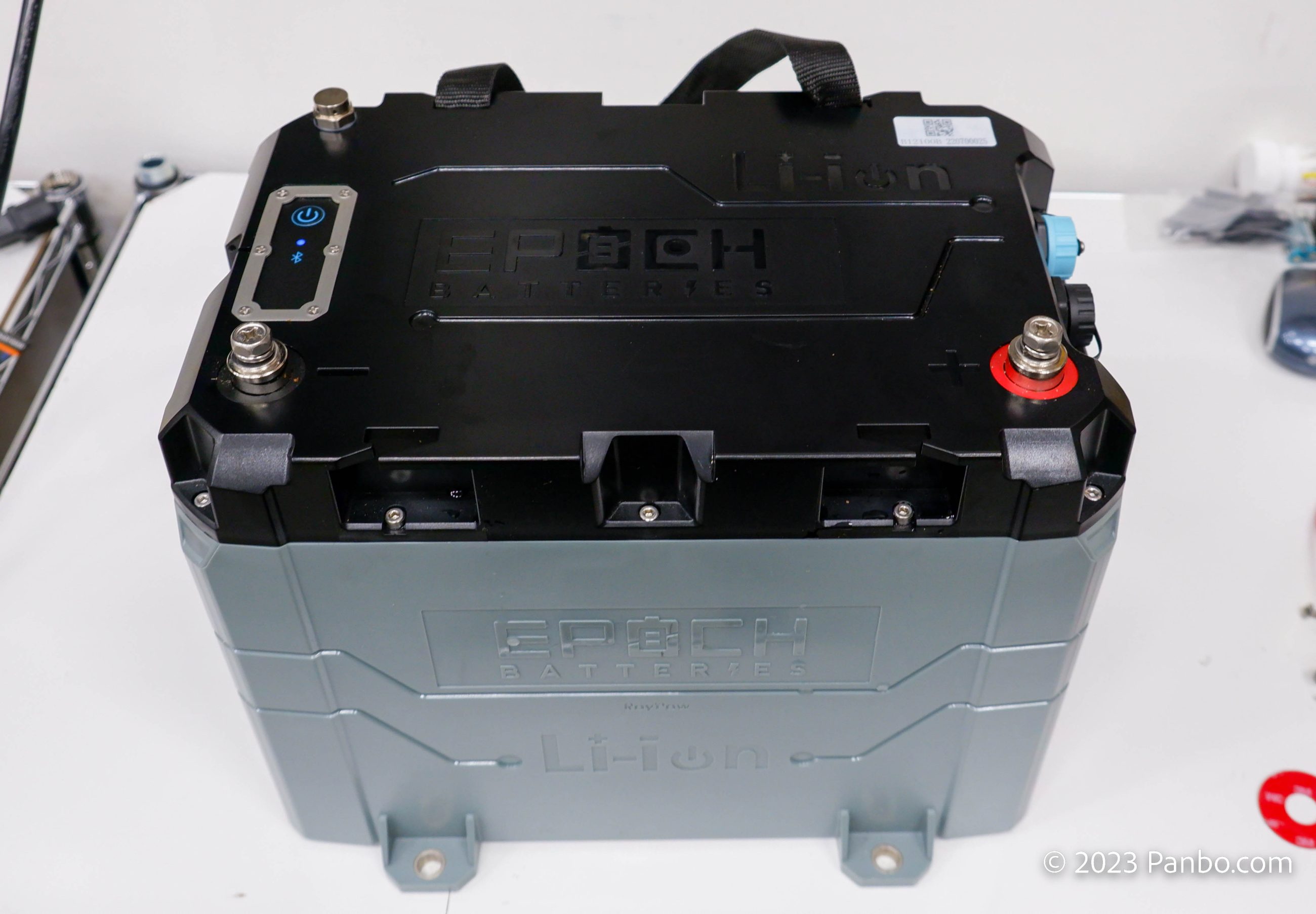One-channel-at-a-time receivers, another Class B problem?

Well, whereas I stirred up a bit of a Class B AIS hornet’s nest yesterday, I may as well keep at it! It seems to me that another repercussion of Class B’s 30 second (at best) dynamic data rate is that the inexpensive “single frequency” receivers are only going to see Class B targets once a minute (at best). I put “single frequency” in quotes because I’m realizing that the nomenclature for these receivers has gotten pretty confused.
For instance, when I characterized the EasyAIS receiver as “dual frequency” back in April, I meant that it could listen to both AIS frequencies simultaneously. Now I realize that I was probably wrong about that, though EasyAIS is not exactly forthright about its receiver’s specs. The company site calls it a “real 2 channel receiver”, which, when you think about it, does not mean that it listens to both channels simultaneously, and an English install manual I found (PDF here) doesn’t mention reception modes at all.
Meanwhile one retailer, YachtBits, also calls it a “double superheterodyne receiver” which sort of sounds like parallel reception on both channels, but another notes that “every few minutes it switches automatically between both channels” (Busse Yachtshop). And Y-tronic, a reliable source in my experience, says that the EasyAIS “monitors both AIS frequencies by alternating between both channels”, further noting that that it is quite well made. Conclusion: I don’t think that the EasyAIS listens to both channels at the same time, and therefore will miss 50% of the AIS messages sent out in its area. I also think that the industry should settle on some terms for these receivers and use them to properly inform customers.
PS, 12/8: It’s good to see that NASA is clear about its AIS Engine: “The unit can receive ships on either the A or B AIS channels. In default setting it alternates between the two channels.” But then in the very next paragraph NASA claims that the Engine outputs to a “NMEA 2000 input.” It absolutely does NOT, and, moreover, I’ve heard that its serial NMEA 0183 output is so flawed that it won’t drive the opto couplers that are a feature of many good multiplexers. Sigh.













Regarding the EasyAIS to not being a real two channel receiver. Well I hope not. I bought and install one (and the EasySPLIT) about six months ago. I, of course, paid more for this unit because it was listed as a two channel receiver.
The site where I ordered it, http://www.svb.de, says the following:
“The new easyAIS 2-Channel device receives data on both frequencies (161.975 MHz und 162.025MHz), evaluates and sends these data via the NMEA- or serial interface to the connected equipment. It receives every at the moment and in future available data, including weather and position reports of Class-A and Class-B transponders. The easyAIS Black-Box features a sophisticated and very sensitive 2-channel receiver and brand new software technology. Even under bad conditions you are able to receive the AIS data in the vicinity of your boat….”
This certainly sounds like a real two channel receiver, but it doesn’t explicitly say it receives on both channels at the same time. Is there some way to tell for sure?
Thanks,
Bob
Yes I would recommend looking at the NMEA stream and see if you see both channel A and B messages interweaved like this (note the channel parameter right before the ascii encoded binary data):
!AIVDM,1,1,,A,15N0JVgP0:Jdw7FG?Wfo4?v@0@4v,0
!AIVDM,1,1,,B,14i9uv0006re6QLG>N;bV1@D085U,0
!AIVDM,1,1,,A,15MRHW0001Je7rDGALs=J3FB0H5K,0
!AIVDM,1,1,,B,15Mm@nPP0rJdf2RG@Muqe?vD06BH,0
If you see long streams of A, then a stream of B you have a single channel that is flipping channels.
Bob, I haven’t heard directly from EasyAIS, but someone who knows the designer well has assured me that the unit is only “multiplex” (only listens to one channel at a time). Therefore it seems like the SVB product description should read “It receives every OTHER at the moment and in future available data,…”
Ben,
I am curious about the NASA and C80 marriage. I have them and have received signals out in the east end of LIS… though infrequently. I did have a close encounter one afternoon and noticed that the plot WAS INCORRECT at the vessel was to the east move easy having passed my bow and it still showed to the west on the C80 plot. Interesting eh.. perhaps 500 to 1,000 feet off. A time delay???
Another odd thing is that lately now that I am in wet water winter storage… and I turned the instruments on I got the AIS icon on the C80 to indicate that it was “on”… which I always assumed meant it had acquired an AIS signal… But I could not locate any targets. In the past the icon showed a red line through it when there was no signal… and when the line disappeared… meaning there was signal.. I always found one or more targets.
Do you know what the icon on the AIS C80 actually indicates… NASA on or signal received?
DefJef:
The NASA AIS engine does not send out any NMEA string that it is on. In fact, when there is no AIS sender in range there is no way of telling that it is working. This is unlike like, say, a GPS that will send out information on the number of satellites, usually a version string, etc. when it is powered on.
It may be that the C80 is capable of seeing that there is *some* voltage at it’s NMEA input, but I doubt that very strongly.
I was a bit surprised to read that the EasyAIS was in fact a single channel switching unit – I had purchased it about six months ago believing it to be dual channel which is why it was more expensive.
Further to previous comments, I checked how my EasyAIS was performing, and monitored the output comparing the channel reference letter detailed above.
I found that it receives messages on channel 1 for 6 minutes, then changes to channel 2 for six minutes!
So I guess that means in only receives half the messages available?
John
Yacht SolentBlue
That’s correct, John. EasyAIS has confirmed that its receiver only listens to one channel at a time, switching every six minutes. They claim that whereas the messages sent are redundant, the receiver doesn’t miss any, but I still think that it’s accurate to say that a one-channel-at-a-time receiver only gets half the AIS messages sent.
Ben,
Like John, I assumed I was buying a real two channel receiver (e.g., it would be receiving on both channes at the same time).
I will contact the place where I bought it and complain, and see what they do. Needless to say, while the unit works fine, I wouldn’t recommend this unit given the way it’s capabilities were overstated and it is expensive compared to other similar units.
Bob
NASA Marine have confirmed that their AIS engine and Radars produced earlier than September (ish) will need an eprom change for make them recieve AIS Class B signals.
The cost of this in the UK is �6 + VAT and labour and your local marine electronics firm will be able to do this for you.
Regards,
Andy